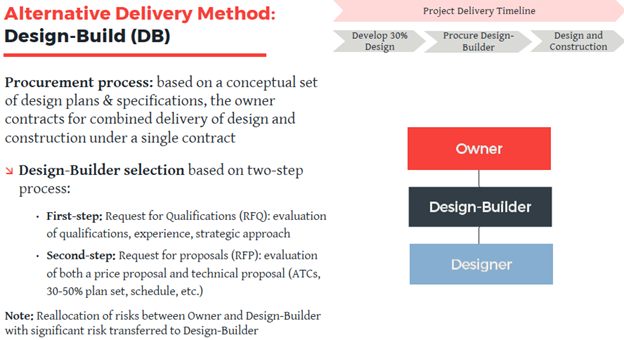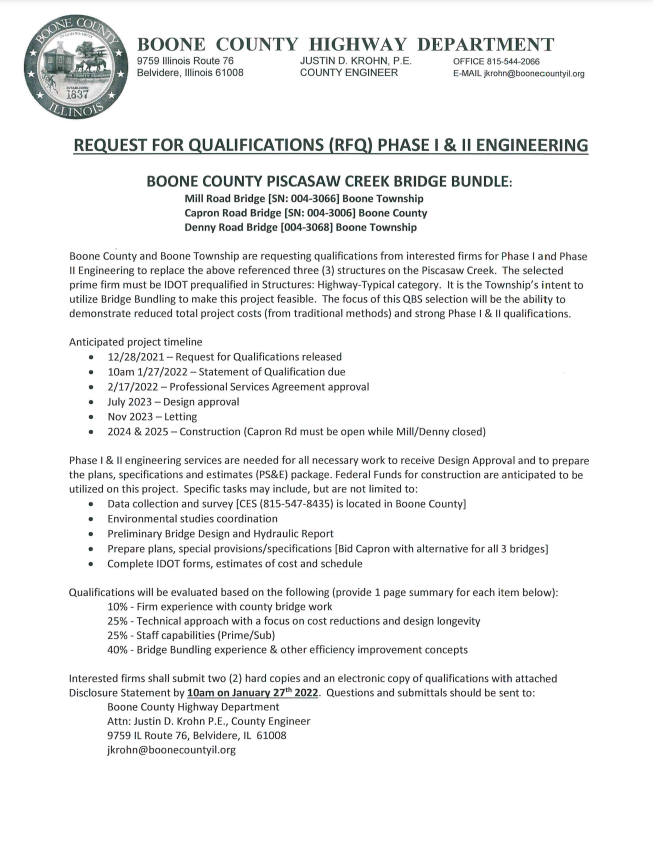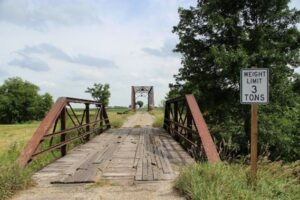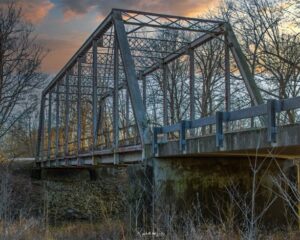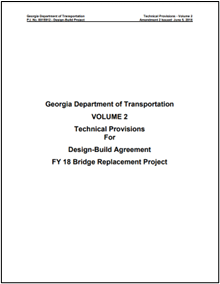Step 7: Select Delivery Method/Project Implementation
Comparison tables of project delivery and procurement methods
There is no “right” procurement method for Bridge Bundling projects. The exact method chosen will depend on several factors, most notably: (I) State and local legislation, (II) the number and complexity of bridges included in the project, and (III) the amount of risk that each party is willing to accept to complete the project. The following table, adapted from the FHWA’s Bridge Bundling Guidebook, compares the main procurement methods used in the past to deliver Bridge Bundling projects: Design-Bid-Build (DBB), Construction Manager/General Contractor (CM/GC), Design-Build (D-B), and Public-Private Partnerships (P3):
| CATEGORIES | D-B-B | CM/GC | D-B |
P3 |
| Program Goals |
|
|
|
|
| Project Characteristics |
|
|
|
|
| Procurement Methods |
|
|
|
|
QBS = Qualification-Based Selection
GMP = Guaranteed Maximum Price
Design-Bid-Build
The following section provides a higher-level overview of the process and common documents used in two delivery methods for Bridge Bundling projects: (I) Design-Bid-Build, and (II) Design-Build.
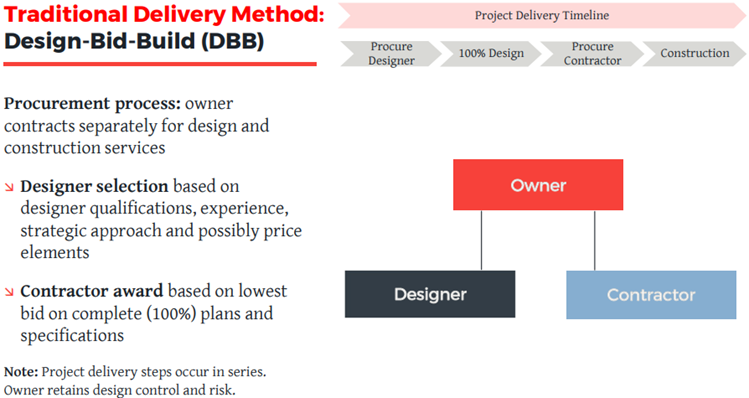
Sample Documents
Design-Build Approach
